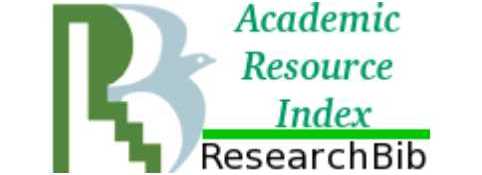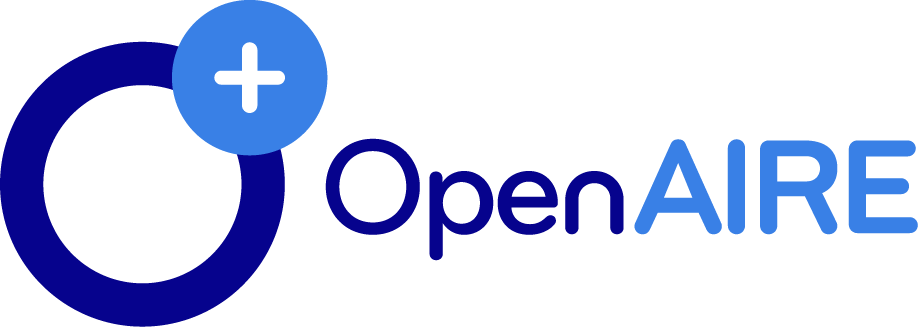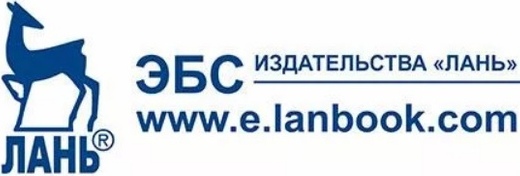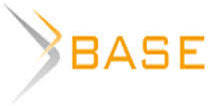CHILDREN’S COGNITIVE DEVELOPMENT WHEN LEARNING SPEAKING
Abstract
The article researches some possibilities of realization of modern re-quirements in preschool children’s cognitive development. The author examines the problem of the maintenance of preschoolers’ cognitive skills and methods of their formation on the linguistic material. The article also analyzes some teachers’ methodic mistakes in language teaching of preschool children revealed during the observations of their professional activities. In order to solve the problems, there was the systematization and justification of the main informational, logic and regulation actions that need to teach children to further mastery of the native language at school. The author proved the theoretical research by the facts which were obtained during the empirical work. Some methodic material included in the text is intended for use in the speech course by teachers in preschool educational institutions. The author concludes that in preparing children for school, there are opportunities for their cognitive development provided the appropriate selection of the content and use certain methodological toolsKeywords: Standard of preschool education, cognitive development, informational skills, regulatory skills, means of cognitive skills developing
Modern preschool education is aimed at children’s cognitive development, which is stated in the official issues. The Federal state education standards indicate the need for the formation in preschoolers the knowledge and skills that are in demand in their future school education [4]. In addition, in the regulations there are more issues about stronger connection between preschool institution and primary school. As a kind of reaction to this changing there is a quite permanent tendency of preschool children's learning. Not quite right in interpreting the above ideas, adults hurry to teach children to read, to write, to count, to make the simplest operations on numbers. However, the point of training children to going to school is the formation of cognitive activity skills and the ability of orienting in the notebook, the book and the development of writing movements coordination.
Unfortunately, many training school education centers distort the pointed contents of the specified work with preschoolers. This tendency is aggravated by the fact that children are often taught wrong. For example, learning to read is the letter - syllable, with the result that preschoolers mix the important concepts "sound" and "letter", read mechanically, without understanding their mistakes; many children have difficulty in the sounds linking when reading, there are problems with the sound analysis of words. Subsequently, teachers need to retrain first graders, which is psychologically difficult for everyone. The same problems arise with the writing.
In this situation, there is a need to describe the content of preschool children’s training to school and to analyze some methodic principles of its implementation. In this article, we focus on the formation of cognitive skills. In order to solve the problem, the author makes a theoretical research and systematize and justifies the main informational, logic and regulation actions that need to teach children to further mastery of the native language at school. The ideas are also formed on the base of quite long introspection of the preschool studies.
The mentioned group of skills of the preschool age includes: getting some necessary information from an oral text or picture and ask the adult for missing information; doing analysis, synthesis, comparison on a certain basis; representing information in a symbolic form and use it; the ability to determine the edge between knowledge and ignorance (what else do not know, cannot do or do poorly), getting a cognitive task and controlling its implementation. Learning these skills is the beginning of universal educational and regulatory actions development (one of the main requirements of modern schooling).
The ability to get the necessary information is formed by a special task addressed to preschool children before they read, otherwise they cannot concentrate on the context. The teacher should not limit the task by saying: "Listen carefully". The task should be done in the form of a certain target (e.g., learn how to play young animals) or a direct question ("How do the baby animals play?"). To make getting information firm, it is recommended that before the formulation of the problem to introduce preschoolers in the subject (for example, to recall the names of some animal cubs, their appearance) and ask the kids if they know how the cubs play. After listening it is important to monitor not only the content of children's responses, but to focus if they fully got the necessary information and to see if the answers have extra (unnecessary) meaning. In order to do it, is useful to compare the teacher’s question and the children’s answer, identifying common words and highlighting the information that is not relevant. For example, if the preschoolers answered "the young wolves jump, bite each other and gnaw the bone", the teacher is recommended to ask if in the response it is said only about the animals’ game. More over, it is necessary to involve all preschool children to discuss the quality of the response by originating replicas "Agree?", "Maybe when the cubs gnawing a bone, they don’t play?", "Did Nick tell us only about the cubs’ game?" etc.
In addition to the formulation of the problem we can develop information skills by using riddles, but under one condition: the focus is not on the answer, but on the information helped us to guess a riddle. To comply with the aforesaid conditions the teacher is recommended after the preschoolers say the answer ask how they determine that in the riddle it is said about this object, animal, plant, etc., or what characteristics help the children determine the object, animal, plant, etc.
For the formation of skills of asking for the necessary information first we should use the technique of "reflected speech". The teacher tells a child to ask them or another child and the instruction of the request contains the question itself. For example, you tell somebody to ask a child where the hare is hiding in the woods. So, the preschooler only needs to grasp the meaning of the question and repeat it with a question intonation. After that the means of forming the ability to request information are tasks in which some information (data) is missing. The teacher provides a task and asks the children to think about what is missing for proper execution or solution. For example, the teacher says, "I’m thinking of a piece of furniture. It is possible to sit on it. Is it a chair or a stool?". Not thinking about the missing information, children are likely to say a chair or a stool. Then the teacher should ask them to think what else they need to know about this piece of furniture to say exactly a chair or a stool. The adult can hint: the chair has a backrest, the stool has not.
The logical actions of analysis and synthesis must be formed in parallel, i.e. preschoolers, first highlight the parts in a figure, the objects in a picture, the characters and the events in a text, then they have to combine them to construct the figure, to make a sentence based on the picture, to name the topic of the text or to formulate its idea (what it teaches us) [8]. In this case, it is set close semantic connection between the part and the whole, i.e. the children do analytic-synthetic actions that underlie reading and writing, and solving mathematical tasks, and learning nature at school [9].
The comparison involves the allocation of common and different on a specific basis. It is important to articulate basis of comparison clearly and ask the children to describe it in the comparable items. It is useful to teach preschoolers the methods of comparison in size: overlay objects on top of each other or use of samples; methods of comparison of color, brightness, weight, and volume: use a template or measure.
The ability to symbolically represent information is actively formed in the process of using memotables and memosteps (symbolic story plans-description or retelling narrative text in particular in verbal working). First, the teacher gives the named schema in a ready form and with the children determines the meaning of each symbol. For example, in the schema – the description of the animal the image of the hole means the place where the animal usually lives, so the kids need to tell the adult how it’s "home" looks. Later, when preschoolers learn to navigate freely in symbolic plans, we can joint their creation. It is important at this stage to discuss with children the choice of every sign. For example, making a plan of the story there is a discussion of what type of a picture or what symbol demonstrates best what you have to say.
The formation of skills to realize the edge between their knowledge and ignorance and to understand a cognitive task requires to organize learning language and mathematics, discovering the world in problem key. If we interpret this way in the language material, training speaking starts with problem situations – speaking tasks which puzzle children or make them doubt if they do right or wrong. When the kids think of reasons of their difficulties they can discover the edge of their abilities and then they can understand the aim of their work at the lesson. For example, before learning how to invite different people to a party the teacher tells the children to invite a cartoon character to their party. Having listened some variants and given another one (probably not good), the teacher asked which variant is quite polite and appreciable and why. The students are puzzled or they take the adult’s variant or they just cannot to prove their choice. As a result, the teacher offers the kids to think over their ability to make invitations and say if they can invite properly or not. After that the children are asked to formulate what they have to learn at the lesson and the kids do it easily.
The teacher can make language puzzles with any material (lexical, grammar, stylistic, phonetic). For example, when the children learn clothes words first they are showed the pictures of clothes which they know very well (a coat, a jacket, trousers, a skirt). The kids have to name the pictures. Then they are showed the pictures of a pullover, a waistcoat, a polo-neck sweater, a jumper, a sweater etc. and there is a high chance that they cannot name the words or they mix them. The point here is not to give the right answer but to help realize that they don’t know some items of clothes and to formulate the aim of the lesson. More details about this teaching technique can be found in the author's book "Methods of formation of children reflection skills in the process of their lingua development " [2].
For the formation of self-monitoring the demand just to check is insufficient. It is necessary to require the children to test themselves systematically and it is important to provide them with the means of self-control. Therefore, the teacher should show a sample of doing any task and fix it in a material (graphic) form. For example, when making up a story about the family, an educator talks about their family and recommends the appropriate memo languages-track; when cutting a snowflake out of paper, the teacher clearly demonstrates the whole algorithm and hangs the routing, or it appears on the interactive whiteboard. Thus the instruction to check yourself is added with method of self-control: the children should compare their work (story, crafts, etc.) with algorithm (foreign languages-track, techroute) and think if they coincide or not. If they are the same by technology, then the job is done correctly. So self-control should be both in process and in the result [10].
All of these actions are formed according to certain laws referred to by many educational psychology scholars. For example, if we turn to the theory of the gradual formation of mental actions by P. Y. Galperin [3], the teacher should show an example of the steps (the algorithm). This means that in the beginning they demonstrate how to formulate the answer to the question, how to highlight parts and merge them together, how to match items and compare them, they themselves formulate the edge of preschoolers’ knowledge and ignorance and a cognitive task, etc. The next stage of building of the cognitive action is reciting it aloud. That is why it is useful in the process of doing logical, symbolic actions, making a response and a solution of cognitive tasks to ask preschoolers what they're doing. For example, you can ask what question the children are answering, or figure out on what basis they are comparing the items and in what way. The next stage of the formation of cognitive skills is their materialization. In the preschool age the stage of reciting and stage of materialization overlap each other. This means that children speak not only what they do, but also perform physical actions with objects (compare – impose on each other, talking about the toy – touch it, disassemble the parts, etc.). Only after this action the skill will go to the internal plan, i.e. preschooler could do it themselves quickly.
We would also like to focus on the mentioned at the beginning of the article – the teaching preschoolers shortcomings. If for some reason the teacher is forced to teach children to read, it should be borne in mind that mastering this type of speech activity preschoolers need to master the sound structure of the language (to form a clear image of the sounds of speech). In this period, there appears a general feature (appropriateness) of children mastering of the language: they tend to pay attention to the meaning of the word, and not on its shape [1]. In other words, for preschoolers the word and what it means – one. They don't understand that the word "tree" is the sound or written sign to identify the plant species. You can see this trouble during the pronunciation work, for example, a teacher asks which word is longer "boa" or "worm"? Children respond: "boa". What sounds make up the word drum? Children respond: "boom-boom-boom". To avoid this contradiction without creating any difficulties, we have already in preschool age to teach to distinguish the word and its meaning. To prevent difficulties, it is useful to 1) take a graphical phonetic model of words that will help to shift attention from the meaning of the word to its shape; 2) do not show many illustrations in the process of working with sounding words but just say the words; 3) do special task which demand to operate first with an object than with its name or answer questions-traps, for example: "I believe that the word "flower" consists of petals. Am I right?" [6]. In general, all the means should be a kind of a game for children tend to learn through the game [5].
In the work with sounding words there is a sufficient resource for the children’s cognitive development as they begin to realize that in speech there is not only the meaning but there is matter; so they see a complex system of language. Having revealed the existence of matter language preschoolers can understand what they are learning, why analyze their speech and perform actions with its units [7].
Thus, in preparing children for school, there are opportunities for their cognitive development provided the appropriate selection of the content and use certain methodological tools.

















Reference lists